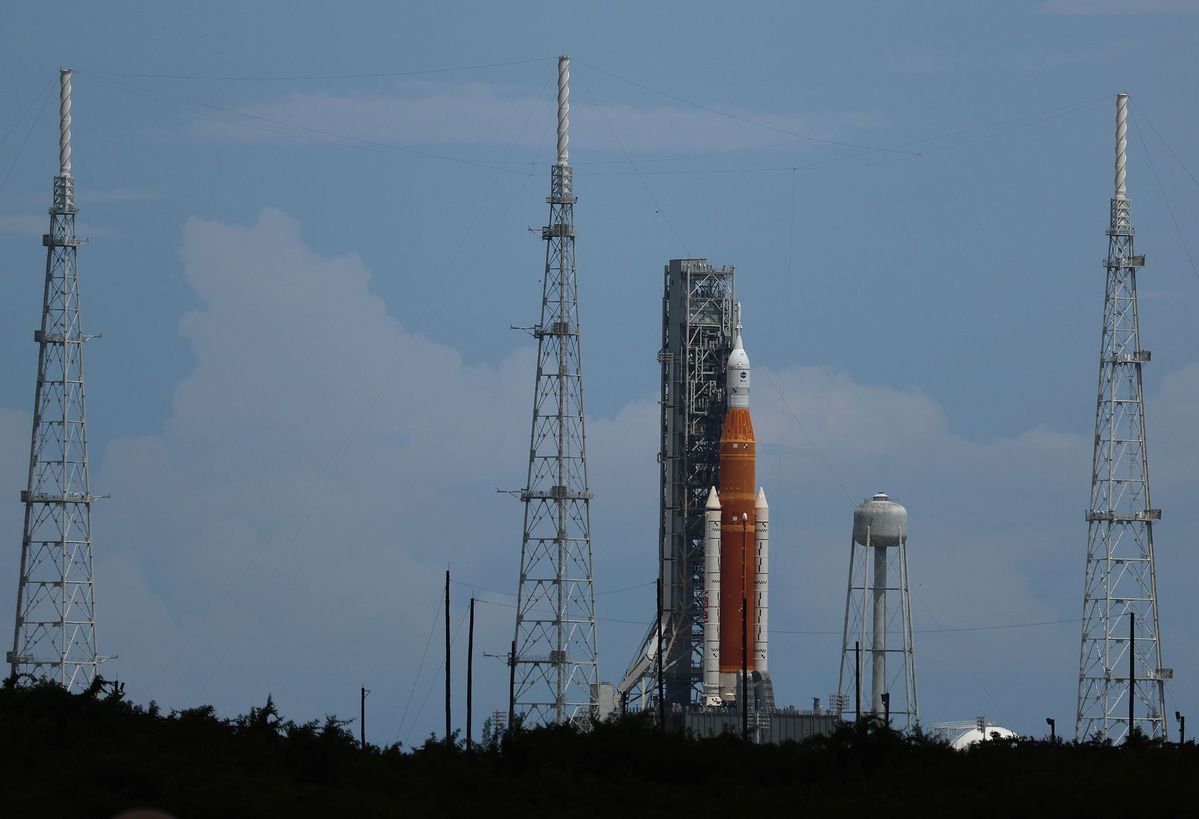Much anticipated launch of NASA moon rocket set


NASA's new moon rocket was not affected by nearby lightning during a Florida thunderstorm and is expected to take off on a highly anticipated test flight Monday from Cape Canaveral.
Officials said Sunday that neither the rocket nor capsule sustained any damage during a thunderstorm Saturday. Five lightning strikes were confirmed, hitting the 600-foot (183-meter) lightning-protection towers surrounding the rocket at the space agency's Kennedy Space Center.
More storms were expected, and although forecasters put chances of acceptable weather at 80 percent Monday morning, conditions were expected to worsen during the two-hour launch window.
More than 100,000 people are expected in person to watch the launch, scheduled for 8:33 am EDT. The liftoff also will be livestreamed on NASA's website.
"Put this down first: It's going to be loud," NASA's Space Launch System (SLS) Chief engineer John Blevins told Florida Today of the launch.
The 322-foot (98-meter) SLS rocket, the most powerful ever built by NASA, will propel an uncrewed Orion capsule 280,000 miles from Earth on a distant orbit around the moon. The rocket, built by Boeing Co, was first scheduled to launch in November 2018.
After years of delays and setbacks, excitement was building for the inaugural flight of the Artemis moon-exploration program, named after Apollo's twin sister in Greek mythology.
"I'm a product of the Apollo generation, and look what it did for us," said Bob Cabana, NASA associate administrator and a former astronaut, to the Los Angeles Times. He said he watched an Apollo launch as a Navy midshipman.
"I cannot wait to see what comes from the Artemis generation because I think it's going to inspire even more than Apollo did," he said.
Jeff Spaulding, NASA's senior test director, said Sunday, "We're within 24 hours of launch right now, which is pretty amazing for where we've been on this journey."
Monday's flight won't be carrying any astronauts — three test dummies will be strapped into the Orion capsule to measure vibration, acceleration and radiation.
The capsule will make a wide lunar orbit, getting as close as 62 miles (100 km) to the moon and traveling as far as 40,000 miles past it, which would set a distance record for any spacecraft designed to carry astronauts.
The follow-on Artemis flight, as early as 2024, would see four astronauts flying around the moon; a landing could follow in 2025. NASA is targeting the moon's unexplored south pole, where permanently shadowed craters are believed to hold ice that could be used by future crews.
A pair of countdown tests earlier this year prompted repairs to leaky valves and other faulty equipment; engineers won't know if all the fixes were successful until a few hours before the planned liftoff. If Monday doesn't work, the next launch attempt would be Friday.
After a 42-day flight, the capsule is set to splash down on Oct 10 off the coast of San Diego, after reentering the Earth's atmosphere at a speed of 25,000 mph (40,234 km per hour). Total distance traveled will have been 1.3 million miles, according to NASA.
Attending Monday's launch will be US Vice-President Kamala Harris and her husband, Doug Emhoff; singer Josh Grobin and pianist Herbie Hancock will perform the National Anthem; and the Philadelphia Orchestra and cellist Yo-Yo Ma will play America the Beautiful.
The Associated Press contributed to this story.






























